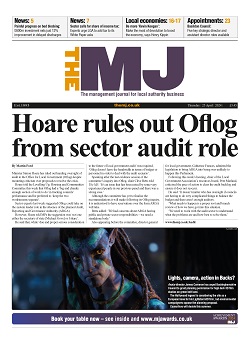COVID-19 presents a fundamental challenge to the very existence of our town centres and high streets. They have evolved as concentrations of businesses, services and other attractors – like green space and public transport hubs, for example, which rely on footfall – and lots of it. Now people are told to stay at home.
Many of the businesses or services they would normally access are shut, or if they are open, they are operating with significant restrictions. The capacity of our town centres is massively reduced by the pandemic. So, what is the future for our town centres?
Researchers, policy-makers and place leaders have been asking the same question for over 30 years. Right now, COVID-19 is undoubtedly the most dramatic challenge town centres have faced – at least in my lifetime – but there have been many other trends and developments which have been affecting our town centres. From the adoption of the motor car in the 1930s, fridges and freezers from the 1950s and the internet in the 1990s, our high streets are constantly shaped by changes in society, technology, and the economy. What is important is how the town, or, more accurately, the people and organisations that have a stake in the town, react to these developments and manage its evolution.
Our research and the work we have done to support Government in England and Wales demonstrates that this process of place management is not always led and/or co-ordinated effectively and can often exclude incumbent businesses, other networks and partnerships (such as Business Improvement Districts) and the wider community.
Therefore, the future of our town centres is not just about funding and masterplans. Instead, as Sir John Timpson said, in his High Street Report 2018, it is ‘inspirational local leaders, working in collaboration with all sections of their community [that] put a buzz back into their town centre’.
Of course, ensuring town centres are both vital and viable is not an easy job. It is like trying to solve a Rubik’s cube – only with more squares and more sides.
As Bill Grimsey points out in his Build Back Better Report 2020 ‘…even before we went into lockdown our high streets were facing an existential crisis. It’s not just their survival that’s at stake. Questions need to be asked about their very purpose’.
We have witnessed years of retail expansion and concentration that have turned our town centre landscapes into blandscapes, with the same offer everywhere. This has altered people’s feelings of attachment to their town centres and ‘throttled out other uses’, according to the Distressed Property Task Force. Now we have the opportunity to reinvent town centres as multifunctional hubs, with COVID-19 being a catalyst for change.
At the Institute of Place Management, we ask, could the new normal be a better normal?
The greater numbers of people working from home, smaller retailers and other businesses altering their business model to trade online as well as in-store, less commuting, more staycations, and increased promotion of culture and heritage to ‘locals’ brings new opportunities to many centres.
While the larger city centres have suffered the most, this too brings opportunities to repurpose retail and commercial space to bring more services and greenspace to city centre residents.
The High Streets Task Force has developed a Routemap to Transformation that builds upon the COVID-19 experience, as well as integrating tried-and-tested approaches to collaborative regeneration – that brings the local authority, business and wider community together to make that ‘better normal’.
No one organisation, such as a local authority, can do this by themselves. Redefining town centres requires the strengthening of collective capacity through the development of effective partnerships, place leaderships and governance (restructuring). This may mean in some cases refreshing local networks with new partners and governance arrangements.
It needs strong and compelling visions, built on good data and evidence (repositioning). These must uncover and reinforce what is unique or special about a place – and change only happens through more open and effective communication between partners (rebranding).
Finally, morphing to multi-functional hubs is the end goal (reinventing) – and it is worth it – as town centres that serve the needs of their communities will be resilient. We are seeing that with COVID-19 – it is the biggest centres that rely on attracting footfall from such large catchment areas that are suffering the most.
Professor Cathy Parker is co-chair of the Institute of Place Management (Manchester Metropolitan University) and research lead for the High Streets Task Force
For more details of the Institute of Place Management, contact ipm@mmu.ac.uk



